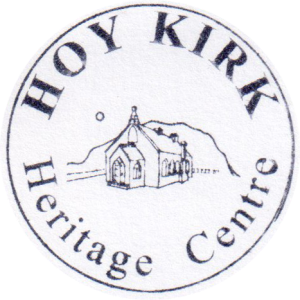White-tailed eagles, or sea eagles, are now Hoy residents 150 years after the last eagles resided in Hoy. And it’s a family thing. In 2020 they raised two chicks, in 2019 Grizela was hatched and in 2018 Bakko and Craggie (the chicks named by North Walls School pupils). Between 2015 to 2017 the pair had two years of failed eggs one of no eggs so the hatching of Bakko and Craggie was widely celebrated. Their favoured home is the Dwarfie Hamars behind the Dwarfie Stone, a convenient spot for visitors who can view the nest from the carpark which has become the RSPB Hoy eagle station.

image: wikimedia commons
Naturalist and writer John Lister Kaye wrote in The Guardian in 2018 of his pleasure at the sea eagles’ homecoming:
A couple of weeks ago a welcome email arrived from the RSPB announcing that the only pair of sea eagles (Haliaeetus albicilla) on the island of Hoy in Orkney had fledged two chicks. Hooray! The great erne (Anglo-Saxon for sea eagle) is back where once it reigned supreme.
Mesolithic and bronze-age tombs hold stark evidence of the white-tailed eagle’s former omnipresence in the archipelago. In 1958 a farmer discovered a small stone chamber containing 30 human skulls and the talons and bones of about 14 sea eagles. Were eagle skulls placed in the tomb as totems perhaps, orwere carrion-eating sea eagles required to strip the flesh from laid-out human corpses before the bodies were interred? Were the great birds thought to carry the spirit of the departed to the otherworld, or perhaps placed there to guard the dead in the afterlife? An evident significance existed between those early farmers and the eagles.
Much more recently we exterminated the erne (the name commonly used in Scotland): mindless extirpation removed it from our skies in 1916 because it had the temerity to be a predator. It possessed that hallmark of evil – a hooked beak – and was vilified by crofters and sheep farmers, by salmon fishers, grouse shooters and their gamekeepers, indeed by just about everyone who saw the Highlands as a place for humans and not for nature. The erne was also very easy to kill.
Sea eagles are carrion eaters as well as predators of rabbits and hares, fish and sea birds, ducks and geese, even, occasionally, of swans. A rabbit carcass laced with strychnine was the means by which many sporting estates and farmers purged their land of ravens, crows, foxes, buzzards and, yes, golden and sea eagles. Sadly, the practice persists to this day although those who represent sporting interests insist it is only a rogue few who continue to break the law in this vile and indiscriminate way.
I travelled to Hoy to see the fledglings for myself. RSPB guardians directed me to the messy ledge nest where, through a telescope, the two dark-feathered, almost-fledged eaglets were clearly visible near the top of a sheer cliff. The unmistakable, broad-winged adults soared majestically high above. Now there are four.
Reproduced from The Guardian article ‘Hoy sea eagles fledge two chicks’ Country Diary 17 September 2018
Read about the changing fortunes of eagles in Hoy here and read about the baby-snatching eagles here.
Poet Yvonne Gray welcomes the eagles back.
Return of the Erne
You are ancient bones
drawn into the light
from a stone-lined tomb.
You are golden shafts
that beam from the eyrie
above the Rackwick Burn.
You are the eye
that pierces walls and windows
in recurring dreams.
You are byre doors
that clap wide
and swing in the gale.
You are a ship
that tosses on currents of air
breasting the blue in full sail.
You are grapnels
that hook the salmon
and swing it from sea to sky.
You are a skater
circling the loch, talons welded
to your mirror image.
You are the storm
that blasts on vast wings
across the Cuilags’ tundra.
You are the shadow
whose passing turns
the blue hare to stone.
You are a monument
on the faultline of grey crags
fledged in water and light.
You are the call
that echoes from ancient places
through paths and ways to come.
Yvonne Gray

